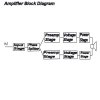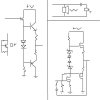catcat
New Member
Does anyone have an idea how to make a hi-fi audio signal splitter (It accepts one input and gives a inverted and noninverted output). I am going to use it for my audio amp project and I would like it to be simple and with discrete components. A MOSFET version would be good, too.




